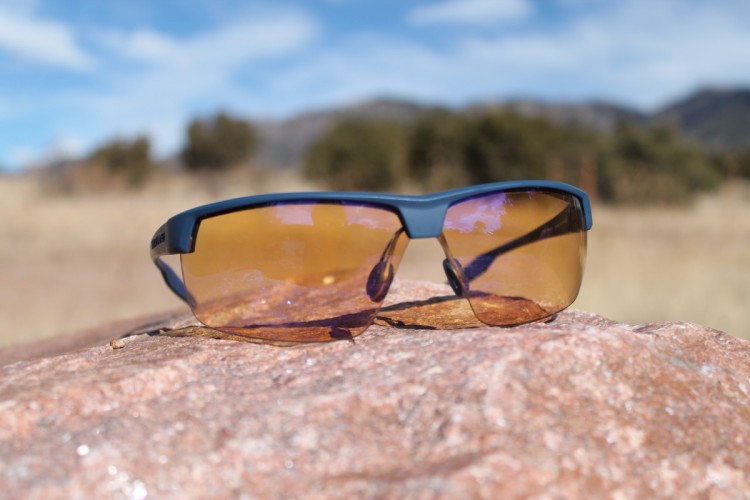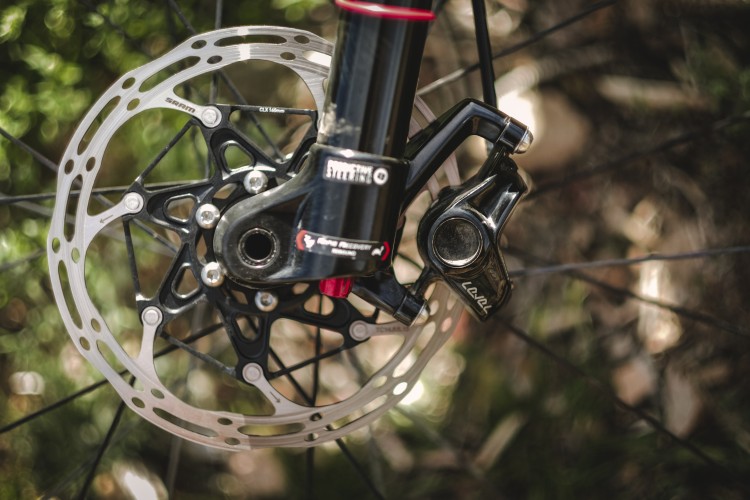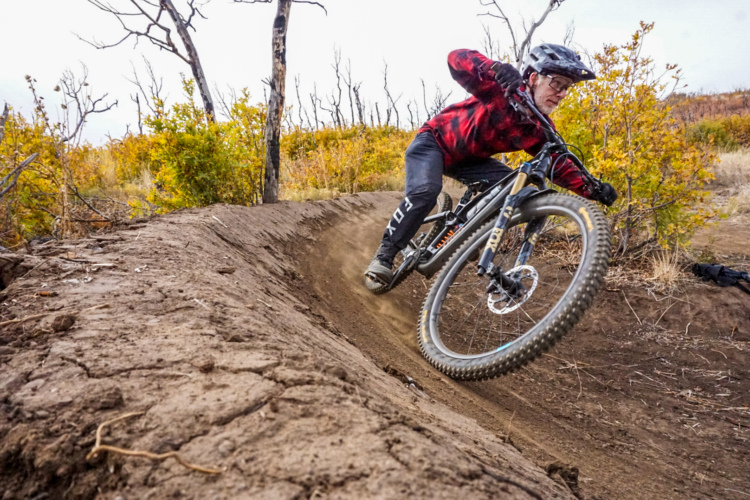It has only been 15 months since I bought my smartphone, and already it’s two iterations behind. While I can say that my parents used the same phone for 15 years, it would not be a fair comparison. A smartphone can play a movie, rate the restaurant you happen to be sitting in, not to mention tell you where your are. My parent’s phone could do one thing only, and marginally well at that. Can the new stuff really be that much better? In a word, yes, and that is because with each new offering, more is included. Much more.
So let’s talk bikes. My go-to is a 2011 full-suspension 29er. 100mm travel front and 80mm rear. Not a speck of carbon on it, quick-release skewers front and rear, and a 3×9 drivetrain. Although it was top tier only a few years ago, it was obsolete by industry spec at two years of age. Like my parent’s phone, the bike I rode all through the 90’s was pretty much state of art for an entire decade. Back then, when most changes were basically cosmetic and real improvement was scarce, we could rally a strong argument for planned obsolescence.
Today, however, skyrocketing capacity in design and manufacturing has unleashed the imagination. If we can think it up, it can be designed and built. Lighter, stronger, stiffer, more flexible – and all in shorter, cheaper design, test, and manufacturing cycles. The improvements are there, you can feel it in every aspect of the ride. And they are coming at us fast.
The Mayans had a term for what is now occurring; they called it the “quickening.” As you may recall, the world was supposed to end back in 2012. December 21st, I think was the date. Nostradamus predicted it, the book of Revelations hinted at it, and, most ominously, the Mayan calendar came to an end. But those Mayans were a sharp bunch; the calendar that ended was just one of a dozen or so instruments used to track everything from tides to planetary phenomenon. That calendar was not so much tracking time as it was tracking consciousness. For example, the first “day” of that calendar was a billion years – as it marked the time it took for a single-celled life form to appear on a hunk of inert mass hurled from the sun. Day two was multi-celled life. And so on. The calendar ended about the time the evolution rate of consciousness went vertical. The amount I expand my solo consciousness in two minutes from data accessed on my obsolete smartphone equals the change in the collective human consciousness from Lucy to Homo erectus. A big round rock just can’t match digital.
To put it simply, our technologies have gone exponential. What was impossible two years ago is industry standard today. We can dream big and then make it happen. Planned obsolescence dates back to before such advances were possible; it ended with the Mayan calendar.
Last spring on my way from Park City to Scottsdale I rationalized a detour to Moab. I was there solo and only had one day to ride, so the plan was to get in as much riding as humanly possible. In the morning I would ride Amasa Back and when the day warmed up a bit I would take on LPS, UPS, and Porcupine Rim; up and back.

My plan faltered on the very first rung when I got to the Amasa Back trailhead and there was a line of 30 riders dropping into that massive pyramid of rock mini-cliffs, one at a time. Not only that, but each rider was using an agonizing amount of time, taking one or two drops at a whack, then re-aligning and plopping down one or two more. An hour wait, minimum. Talking to the last guy in line I learned they were a riding club from Texas, and that I was to play through.
I wheeled past a quarter million dollars in drool-inspiring big bikes, full face helmets, shin-knee-elbow-body armor, shoes, gloves and GoPros. At the front of the line was a kind of coach/cheerleader/bus driver figure yelling out tips and encouragement to each hesitant rider bouncing down the trail. He took a long, questioning look at my sorely under-gunned and outdated ride, no-name jersey and trail helmet, then slowly back to me, as if to say “the bunny slope is back there.” Finally he hollered to his riders below to let “the old guy” walk through. To be fair, they were a young bunch; few driver’s licenses and a lot of acne; 25 would have appeared old.
I had first ridden this section of trail back in1995, before it was a bike trail, before most of these guys were born, and rear-suspension was still in diapers. Front suspension was maybe 40mm of harsh elastomer squish. My first trip down this probably looked a lot like today’s crop; trying to wrap my brain around the concept of rolling down something not made for wheels. Decades of riding and nearly two of coming to Moab had blessed me with the nuance of bike handling, suspension or no. Along with that comes a certain confidence and mastery that displaces technological rift. The bus-driver guy grunted disapprovingly when I straddled my bike and clipped into my pedals, internally cursing the certainty of a flight-for-life evac.
For me momentum is key, and the line in the trail shows itself after a certain pace is attained. This was a trail of big drops, the kind that will flatten a rim on a short-travel bike like mine unless ridden quickly, with finesse and lightness. It is a dance of two wheels, rider and rock. In just a few seconds I cleared the final drop and was about to pedal on down the trail when a kid stopped me. “Dude, that was awesome!!! What are you riding?!”
And this is the rub; the bike is trivial in comparison to the skill required to master it, yet the bike is what is often credited with the accomplishment. It’s the hours, the days, weeks, the years of desire and doing. Yes equipment matters. I was riding a bike light years ahead of the one I started on, yet still behind the curve of what most those kids had underneath them. So kid, here’s some advice: as a sort of health plan, ride the living piss out of that bike you have and tuck away a certain amount every month for a new one. The better you get, the more you can do with what you got and when you get a new one, you’ll just be that much better. Keep current with technology and when a threshold is attained in either your bank account or technology, sell your worn out rig and go as deep as you can on a new bike. As the decades pass, you’ll be out here, fit, breathing and living while most of your buddies with you today are on some couch cheering some forgettable game.
So, do I wish I had brand-new, carbon, 1×11, 140mm that descends like water but climbs like a hardtail, stiff-yet-supple ride? Oh, yes. But I don’t, and my financial situation declares that such a ride is a few miles down the road. So, do I still ride? Hell yeah. And there is something about having to look back to check if your rear tire has gone flat or if it’s just the combination of a flexy rear triangle/non-thru-axle/narrow alloy rim. The fact is, the bike I ride today, although it’s not cutting edge, it’s not my parent’s phone, either. It gets me to the next step, quite ready to savor all those amazing advances I have been poring over on Singletracks.
Mytchell Mead has been wrenching on bikes since the 70s, and bought his first mountain bike in 1983–the original Specialized Rockhopper. Since that time he’s worked at shops, owned bike shops, and traveled all over the place riding mountain bikes. He currently resides in Oregon.












7 Comments
Mar 29, 2016
Apr 1, 2016
"As the decades pass, you’ll be out here, fit, breathing and living while most of your buddies with you today are on some couch cheering some forgettable game."
I couldn't agree more. I'm teaching my 5, 6 and 8 year olds to ride trails, hoping that they'll fall in love with riding and will help keep them fit and strong...unlike the masses of out of shape, overweight teenagers I see every day.
Thanks for the entertaining and inspiring read.
Mar 29, 2016
Mar 31, 2016
Mar 29, 2016
So while my daughter can have fun on her $600 bike from REI, I'm one of those that thinks the positive experience increases when you splurge on upgrades that translate into a more enjoyable experience. That being said, all that work from riding her 32 lb REI bike was a huge bonus when my daughter came home for the holidays and was riding my 25 lb Yeti SB5C. She was killing it, especially on the climbs. I've been trying to get her to upgrade her bike for months because as much fun as she has now, that enjoyment will only increase on a better bike.
Mar 29, 2016
As in so many sports, wisely spending a few dollars on some skills lessons and practicing with a purpose are often more productive than spending a lot of dollars on the latest tech wonder.
Ride and enjoy! BRAAAP!
Apr 2, 2017